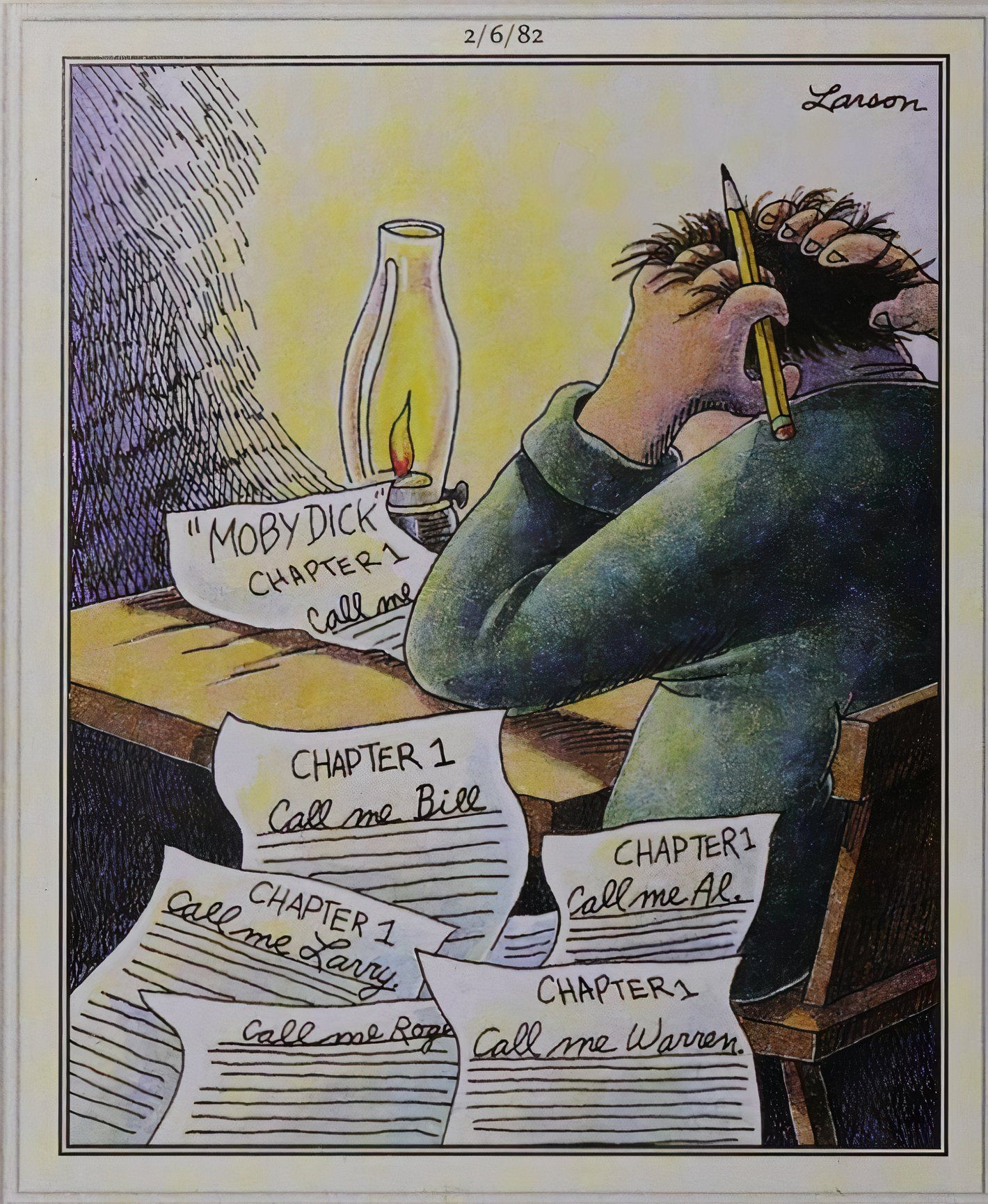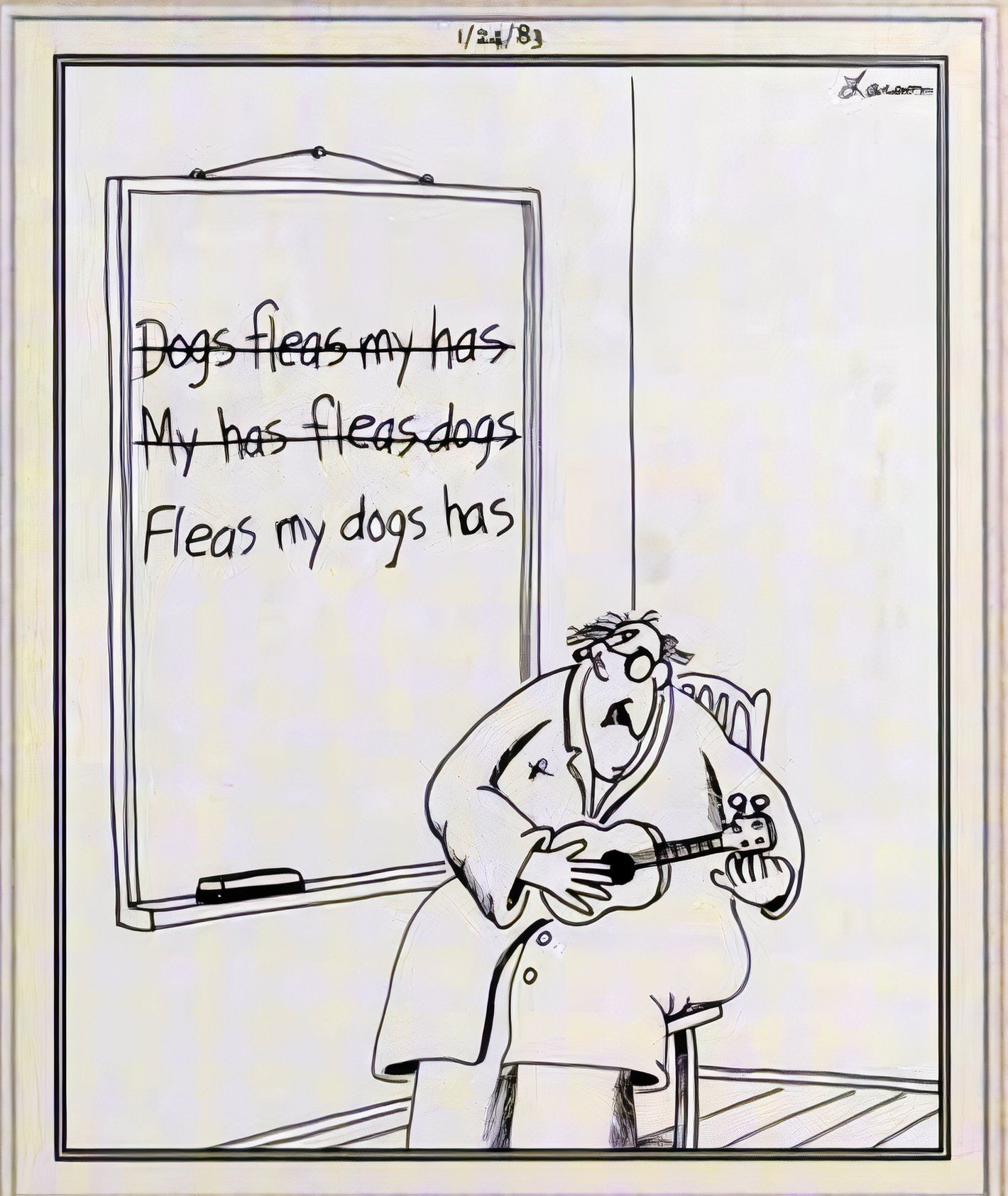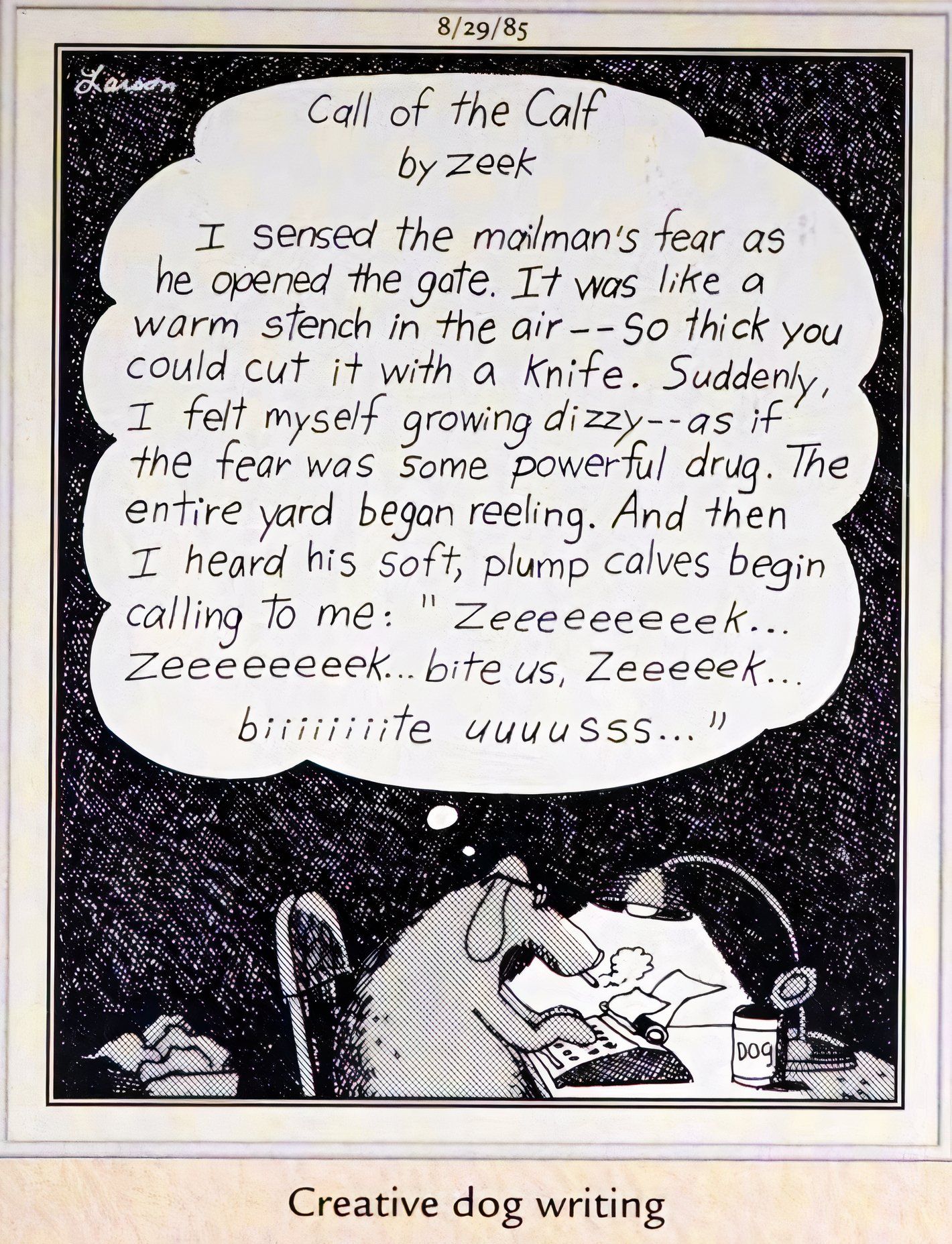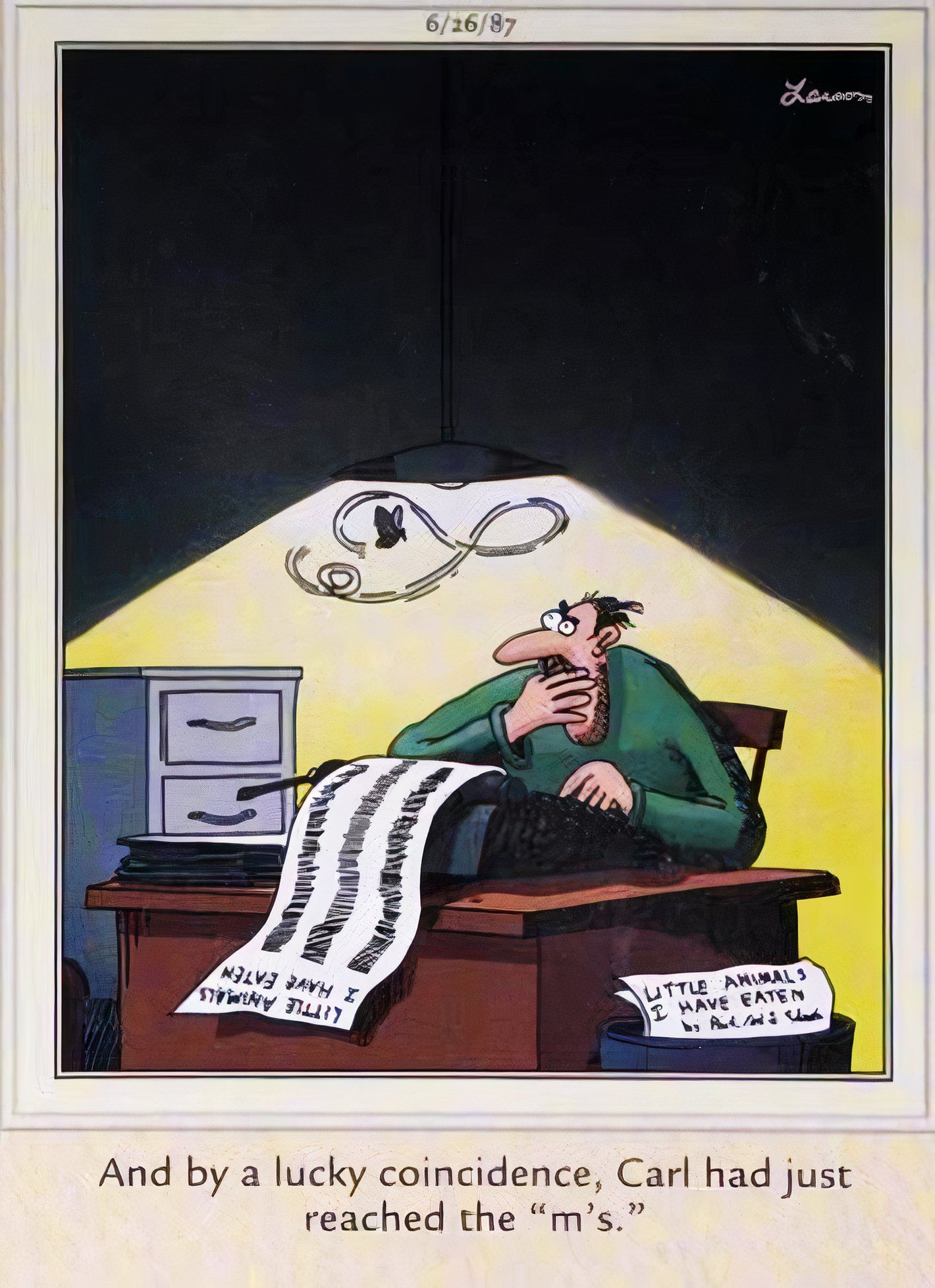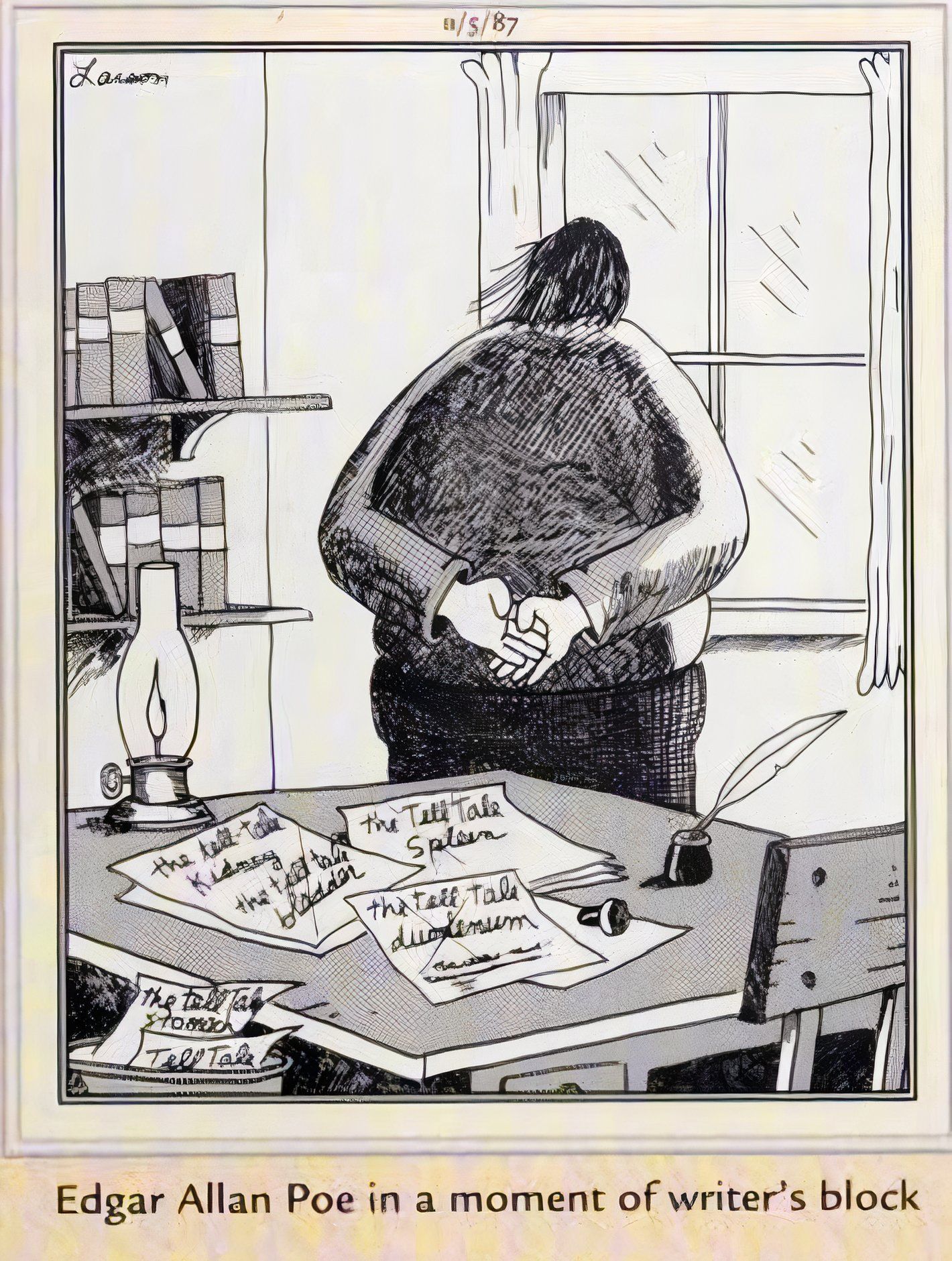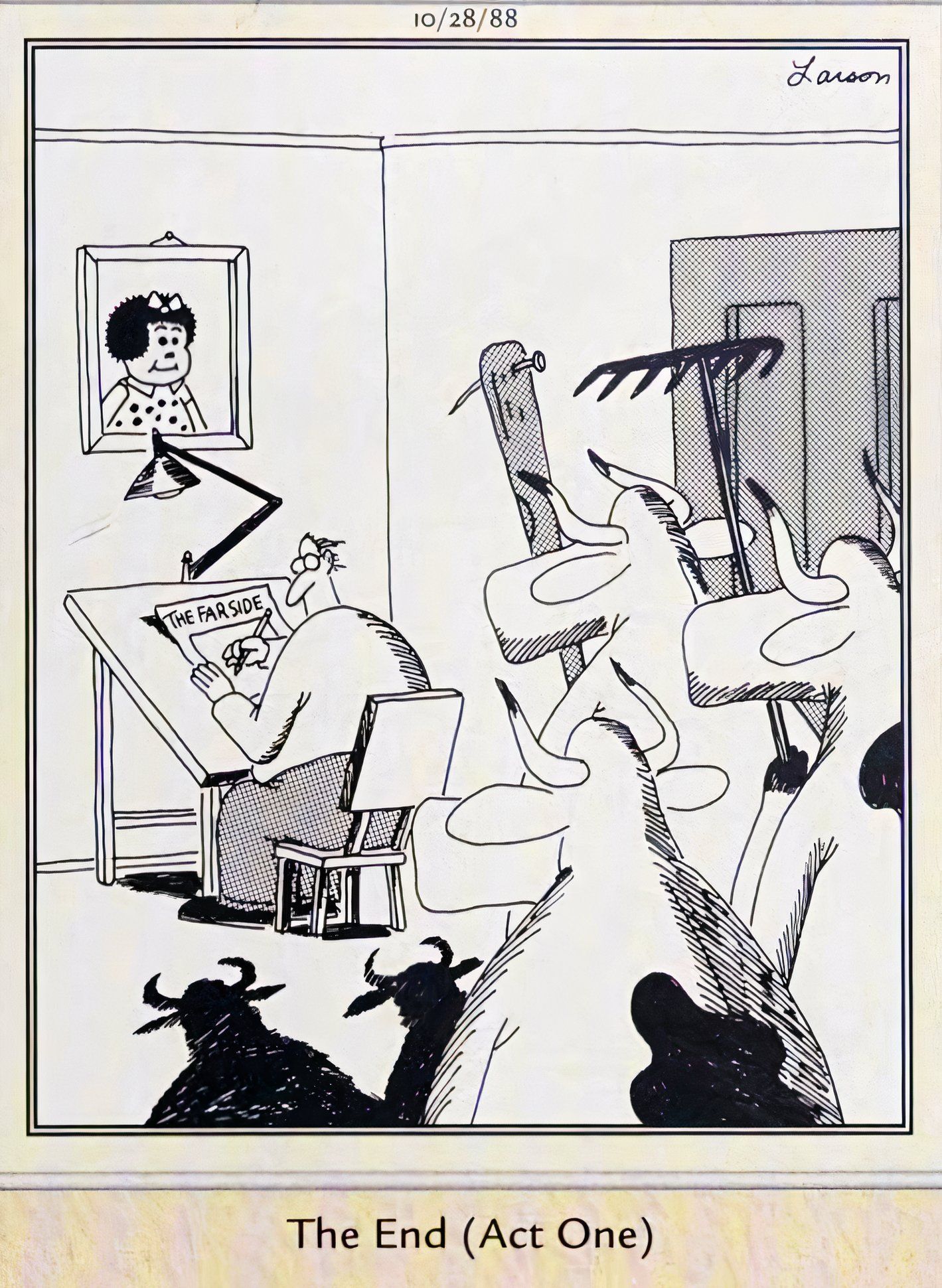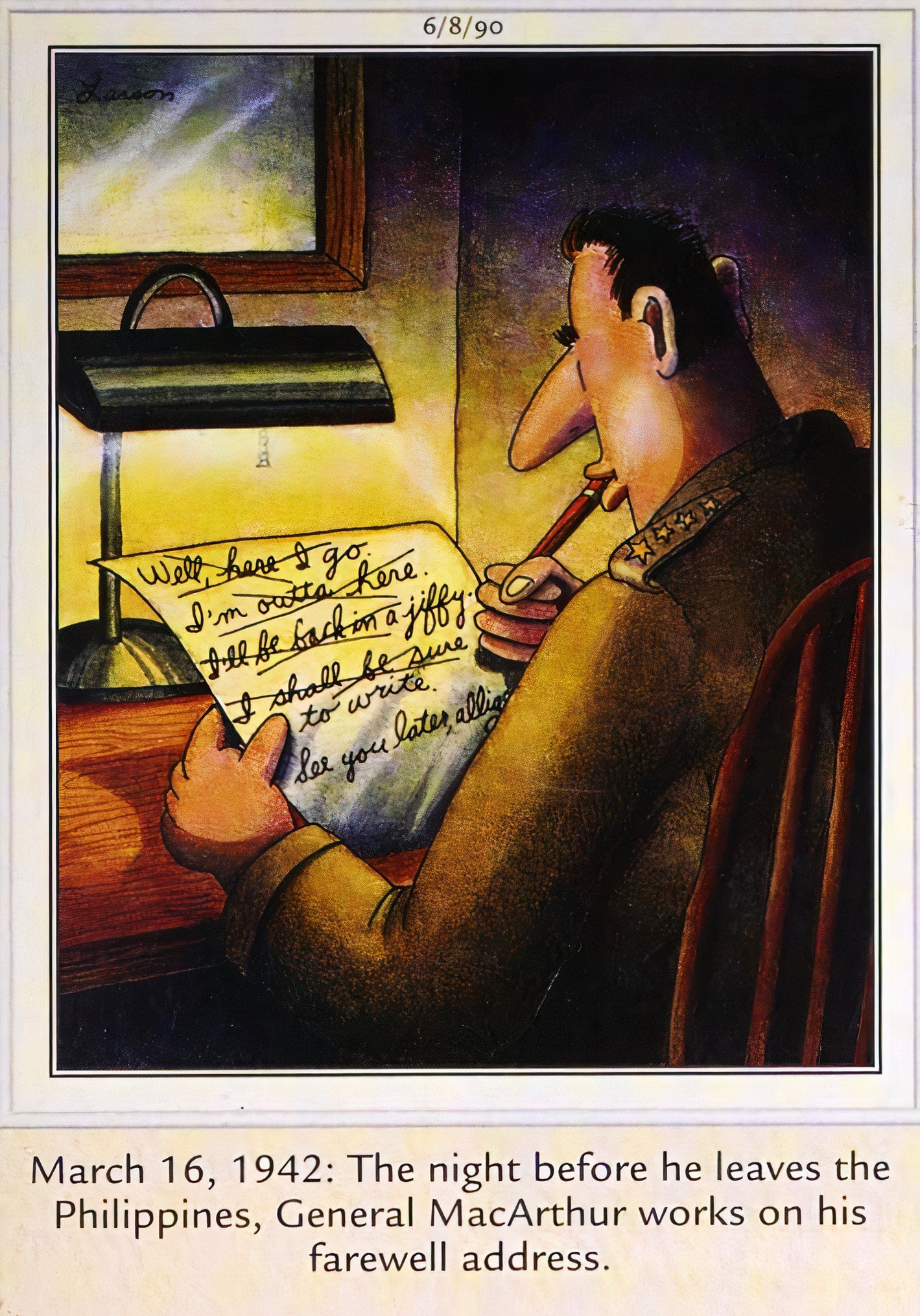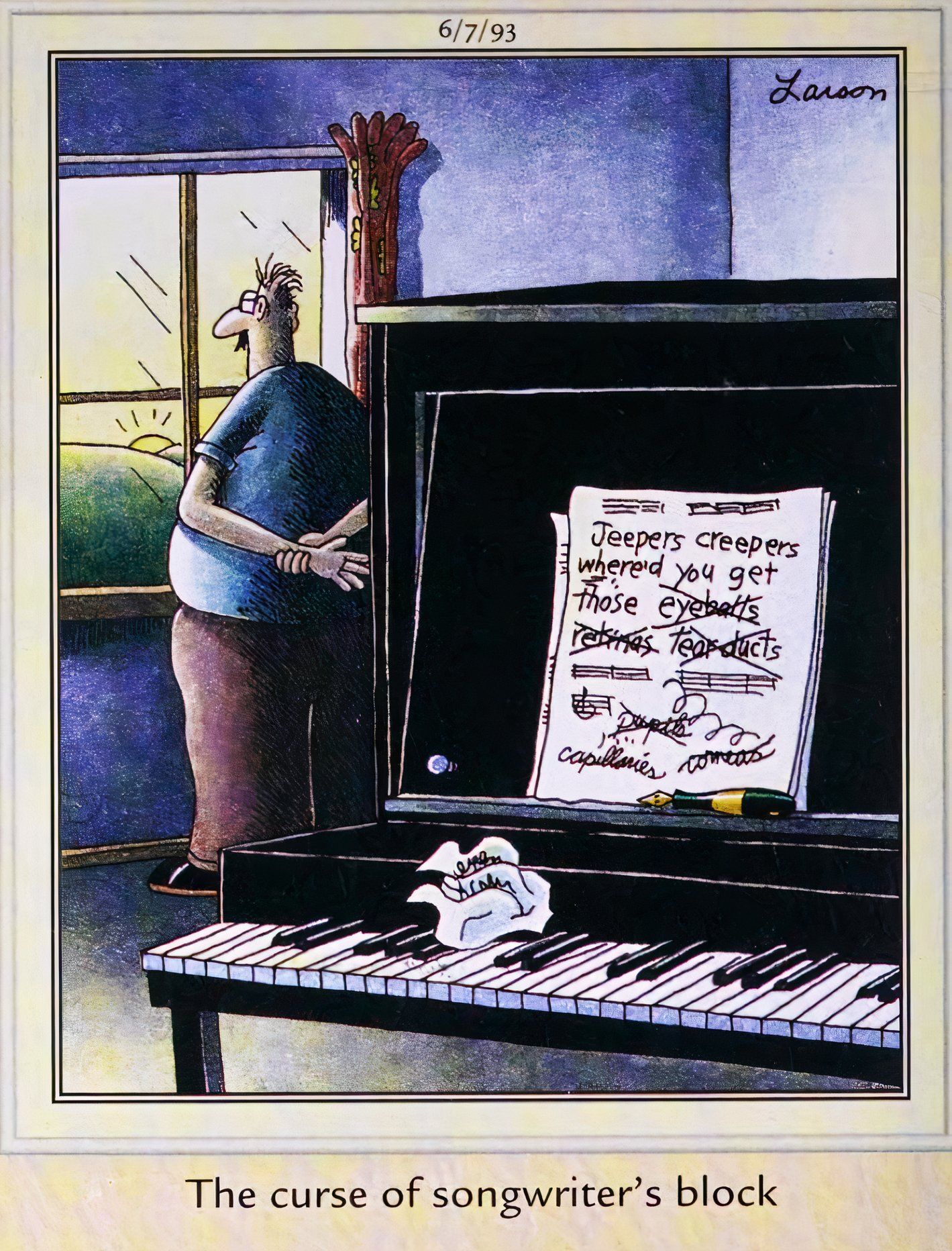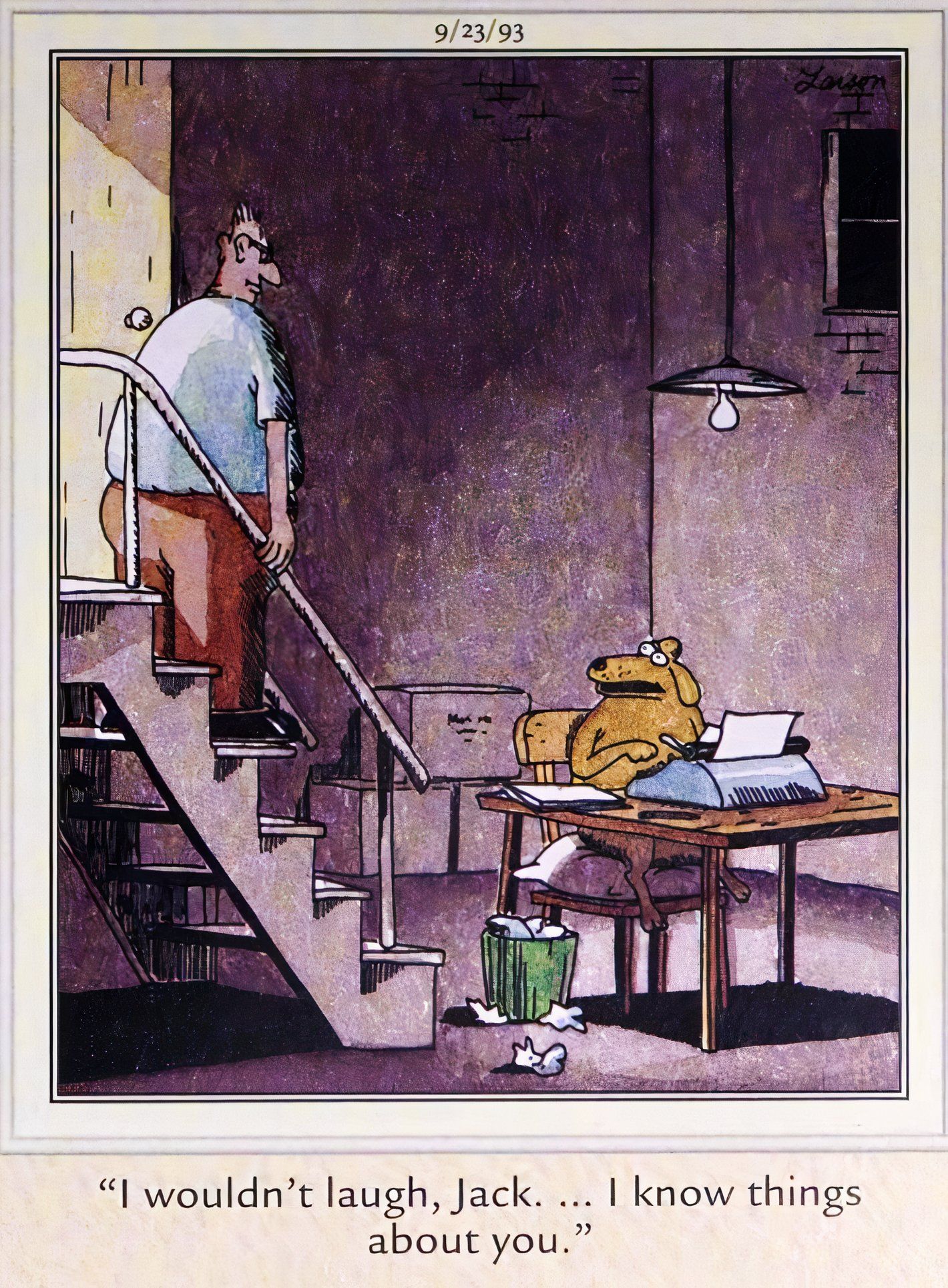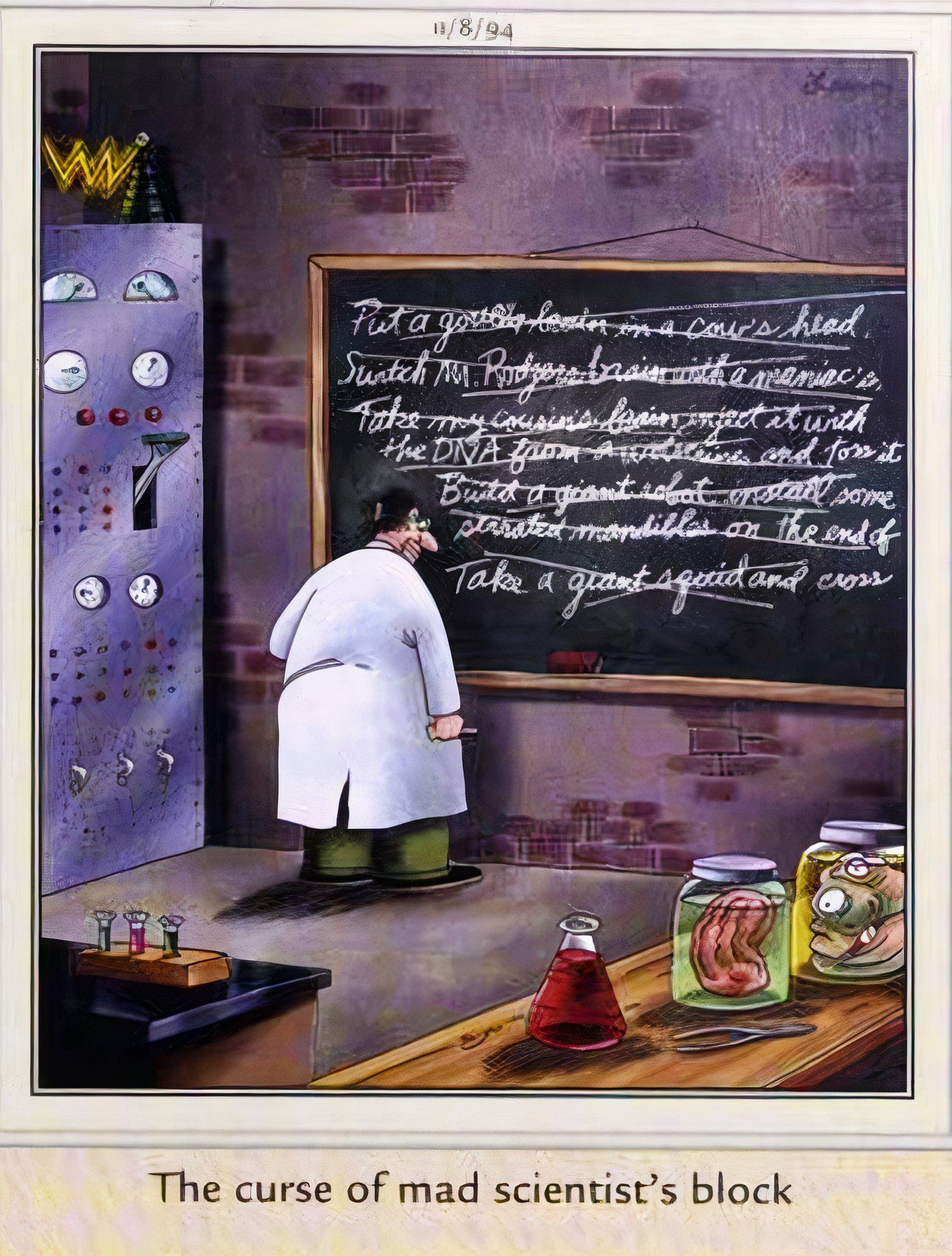Summary
-
The Far Side
featured a number of hilarious depictions of writers – from famed authors Herman Melville and Edgar Allen Poe, to canine creative writers, to Gary Larson himself – which any aspiring creators can relate to. - Larson cleverly portrayed the creative struggles writers and artists of all kinds face, from finding the right opening sentence to a novel, to figuring out the perfect rhyme to make a song iconic.
- Gary Larson’s cartoons about writing and creativity are at once inspirational and cautionary, depicting writer’s block besetting even the greatest creative minds.
Repeatedly throughout its run, The Far Side depicted writers – from the iconic to the unknown – struggling to get words out on the page, as well as creators working in other mediums suffering similar set-backs as they attempted to craft their masterpieces. In each case, Gary Larson offered hilarious and relatable takes on the creative process.
As an artist working in multiple mediums, as well as a musician, Gary Larson was acutely attuned to the ups-and-downs of inspiration, and the hard work it took to fully realize an idea on the page. That is why his panels about the “curse” of being creatively blocked are still incredibly meaningful to this day, especially to young artists, performers, and creative types of all kind seeking to learn a valuable lesson from The Far Side.
From literary greats, to ambitiously creative canines, these panels about writers represent some of The Far Side’s most fascinating cartoons.
Related
Gary Larson’s Final Words On His Career Are Bizarre, Touching, & Perfect For The Far Side
In his final essay from “The Complete Far Side,” Gary Larson went on a tangent which delightfully encapsulated the heart of his long-running comic.
10 Herman Melville Struggles With The Opening Line Of “Moby Dick”
First Published: February 6, 1982
Gary Larson repeated this joke several times throughout The Far Side’s run, but it is hard to argue that this wasn’t the most effective iteration. Here, a harried Herman Melville tugs at his hair, as he agonizes over the opening line of Moby Dick, cycling through variations including “Call me Bill,” “Call me Larry,” “Call me Al,” and more, as the iconic “Call me Ishmael” alludes him for the time being.
As any writer knows, perfection is the enemy of completion – especially when it comes to first, handwritten drafts; surely, if the Far Side version of Melville gets up and steps away from his desk for a few, perhaps going for a quick walk down to the marina, he’ll be more likely to find inspiration striking, and the right name for his narrator popping into his head after all that turmoil.
9 Every Writer Knows That Sometimes The Words Just Come Out All Wrong
First Published: January 24, 1983
Readers who have strummed – or more accurately, tuned – a ukulele will recognize “my dog has fleas,” as a device used to help get the sound of each string precisely right. Evidently, this Far Side panel depicts the origin of this musical tradition, and in Gary Larson’s conception, it was more difficult than one might expect.
In this panel, a frustrated man tweaks the tuning on his ukulele once more, as he sits next to a chalkboard with variations on the mnemonic crossed out, including “dog fleas my has,” “my has fleas dog,” and “fleas my dog has” – with his closeness to the right answer suggesting that while readers find this innovator at a moment of peak frustration, it can be surprised that he is on the precipice of a breakthrough.
8 One Of The Far Side’s Rare Writers On A Roll
First Published: August 9, 1985
Most of the entries on this list deal with creative frustration, in one form or another. This is the stand-out exception; captioned “creative dog writing,” it depicts a spectacle-clad, cigarette-puffing dog clacking away at a story about biting a mail carrier. Gary Larson’s strong detail work makes this panel memorable, as he perfectly captures the vibe of an inspired late night writing session with touches such as the open dog food can on the desk, and the wastebasket full of crumpled papers from previous drafts subtly poking out from the bottom of the frame.
Of course, one of the most basic pieces of writing advice is “write what you know,” and despite the routine absurdity of The Far Side, this was exactly what Gary Larson did, as his humor was always the product of some insight or observation that he made.
7 Sometimes Writers Have To Wait For Inspiration To Appear
First Published: June 26, 1987
Though not about a prose writer, per se, this Far Side panel has all the familiar signifiers of Gary Larson’s typical depiction of writers: a man in a dark room, a bright light shining directly over him, sitting at a typewriter trying to figure out what to put down next, with a previous draft stuffed in a nearby trashcan. That said, the bizarre twist here is that the man is composing a list of “little animals [he] has eaten.”
The caption elaborates on this further, noting that “by a lucky coincidence, Carl had just reached the ‘m’s’,” as an unfortunate moth twirls around his head. In the most bizarre way possible, Gary Larson once again illustrates the importance of inspiration – and it can be said, outside influence – on the writing process.

The Far Side Complete Collection
$71 $125 Save $54
Fans of the far side can’t pass up this master collection of Gary Larson’s finest work. Originally published in hardcover in 2003, this paperback set comes complete with a newly designed slipcase that will look great on any shelf. The Complete Far Side contains every Far Side cartoon ever published, which amounts to over 4,000, plus more than 1,100 that have never before appeared in a book and even some made after Larson retired.
6 Edgar Allen Poe Struggles To Write “The Tell-Tale…What?”
First Published: November 5, 1987
In a reprise of his earlier Herman Melville joke, Gary Larson depicts another famous writer struggling to get an iconic literary idea out on paper. Featuring “Edgar Allen Poe in a moment of writer’s block,” the author is depicted with his hands clasped behind his back, pensively staring out his office window, desk litered with crossed out variations on the title of what will eventually become “The Tell-Tale Heart.”
Having rejected several organs as unsuitable for the story, Poe is shown to have done the right thing here – stepping away and allowing his ideas to percolate, his creative juices to bubble up to the surface, so that when he sits back down and once more takes up his pen, or in this case quill, he’s that much more likely to realize that only a beating heart fits his tale of murder, paranoia, and madness.
5 Gary Larson Knows Sometimes A Writer’s Creations Can Turn On Them
First Published: October 28, 1988
Though
The Far Side
is often described as running continuously from 1980 to 1995, that is not entirely true. Artist Gary Larson took several breaks over the years, most notably, taking off the entire years of 1989; during this time, newspapers ran reprints of
Far Side
cartoons, meaning that the strip remained in continuous publication, though no new illustrations were produced between this strip and the start of 1990.
Though this hiatus helped to mitigate Gary Larson’s creative burnout, it could only delay the inevitable;
The Far Side
ran for five more years, until Larson retired from cartooning at the start of 1995.
The Far Side had its share of fourth-wall-breaking jokes over the years, with this being a particularly memorable one, as it features a Far Side-style version of Gary Larson himself sitting at his desk writing The Far Side, only to turn around and discover a mob of weapon-wielding cows coming for him.
Captioned “The End (Act One),” this proved to be the hilarious punctuation on the first half of The Far Side’s run. Cows made the perfect choice for the animals to rise up and attack their creator, of course; not only were they proliferate, appearing constantly throughout the comic’s run, but a cow was also the focus of what is still considered to this day to be the most confounding Far Side cartoon.
4 General MacArthur Struggles To Write His Farewell Address
First Published: June 8, 1990
In one of The Far Side’s jokes ripped straight from the pages of a real history book, American General Douglas MacArthur can’t find the right words to start off a big speech he has to give the next day. Despite his heroics druring World War II, MacArthur’s legacy is complicated, particularly by his role as the military overseer of the Phillipines in the aftermath of the war.
As a result, some readers might understandably find this Far Side joke controversial; others will appreciate the juxtaposition between the gravity of this real-life historical moment and Gary Larson’s irreverent portryal of the general, who struggles to start his speech with opening lines ranging from banal to silly, including “Well, here I go,” and “see you later alligator,” In any case, Larson once more keenly portrays the extravagant weight writers place on opening lines.
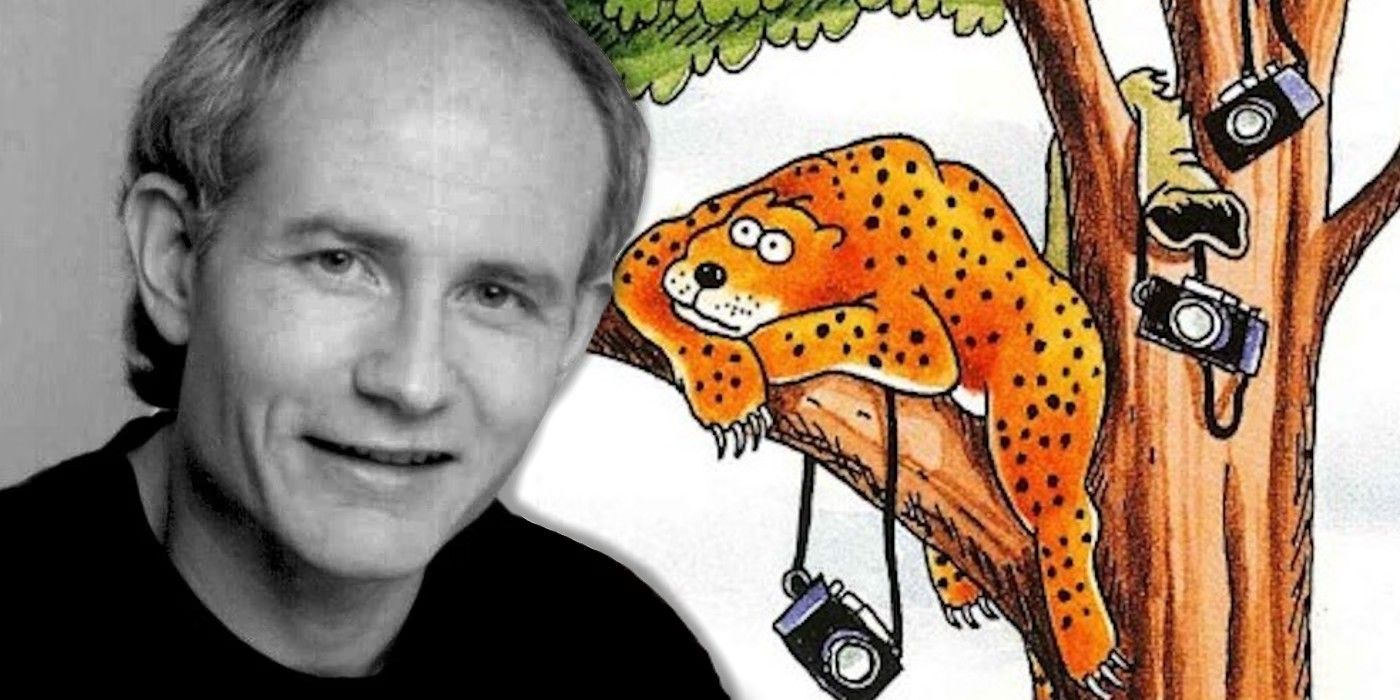
Related
“What Else Didn’t I Draw?”: Gary Larson On The Far Side Comics Left Unproduced By His Retirement
Reflecting on his career several years into retirement, Gary Larson admitted that he fleetingly felt haunted by the Far Side comics he never drew.
3 Songwriter’s Block Is Still Writer’s Block
First Published: June 7, 1993
Though professionally a writer and illustrator, Gary Larson’s true passion was for music, which invariably played a significant role in his creative approach. Here, Larson depicts “the curse of songwriter’s block,” in a panel reminiscent of his Edgar Allen Poe cartoon – as a man steps away from his piano, leaving a crumpled page of discarded lyrics sitting on the keys, and goes over to his window to watch the sunset, hoping the right words will come to him as he’s partially distracted.
Hilariously, Larson repeats his trick of making the lyrics the man is struggling with familiar to the reader, meaning the joke derives from the fact that the solution to the man’s creative woes is right there in front of him, as he attempts to complete the line “Jeepers, Creepers, how’d you get those….” by cycling through a list of synonyms for “eyes,” without landing on the obvious, and iconic, “peepers.”
2 Support Your Writer Friends, People; They Need It
First Published: September 23, 1993
This Far Side panel deviates from the formula Gary Larson frequently used to depict authors, but in a way that is no less relevant to the actual struggles of being a writer. In most case, Larson depicted the trials and tribulations of writing as a solitary pursuit – here, though, he evokes the need for writers to have a support system in their lives for when the going gets rough.
That isn’t exactly the case here, to hilarious effect; coming down to the basement and finding his dog laboring over a typewriter, with an overflowing wastebasket full of discarded pages next to his desk, a man smirks, only for his dog to threaten blackmail. “I wouldn’t laugh, Jack,” the frustrated canine scribe says, ominiously adding “I know things about you” in order to assure that his literary aspirations are taken seriously, by any means necessary.
1 Gary Larson’s Perfect Analogy For His Own Career
First Published: November 8, 1994
Though this panel depicts “the curse of mad scientist’s block,” it actually encapsulates Gary Larson’s creative process more precisely than any of his cartoons about writers. With Herman Melville and Edgar Allen Poe, Larson might have offered a general account of writing’s bleaker moments using specific examples, here he does the opposite, making a specific point about his own idiosyncratic work under the cover of a general “mad scientist” gag.
Standing at a chalkboard with a variety of ideas for outrageous experiments crossed out, this scientist is representative of the chaotic creative energy that Gary Larson brought to the drawing board throughout his career. In particular, he excelled at converging and recontextualizing elements that no other creator was likely to mash together, making The Far Side truly the product of an unhinged – in the best possible sense of the word – and unique writer, illustrator, and thinker.
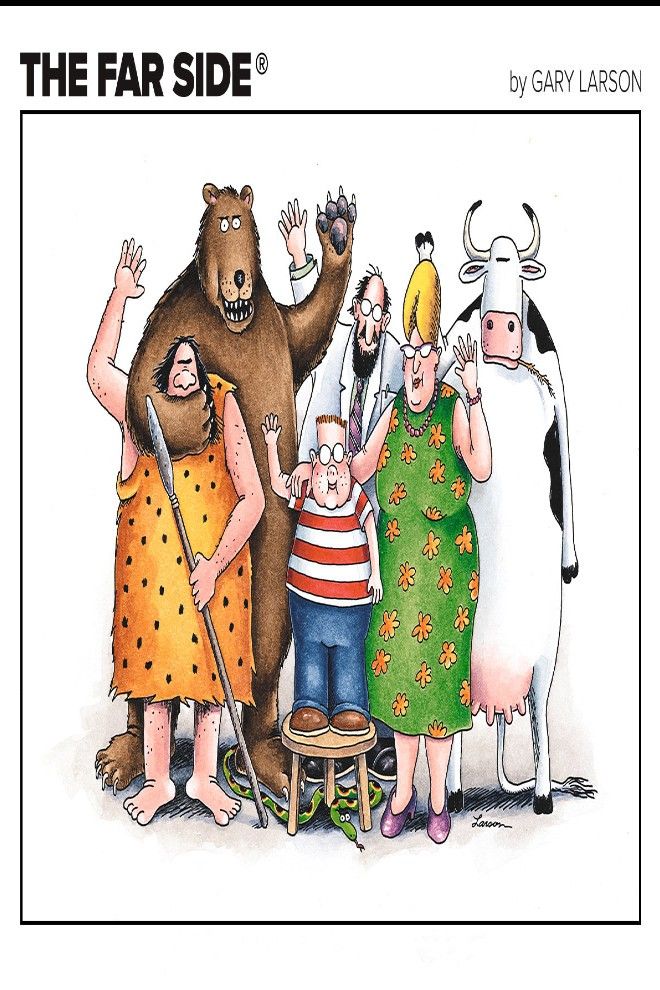
The Far Side
The Far Side is a humorous comic series developed by Gary Larson. The series has been in production since 1979 and features a wide array of comic collections, calendars, art, and other miscellaneous items.



